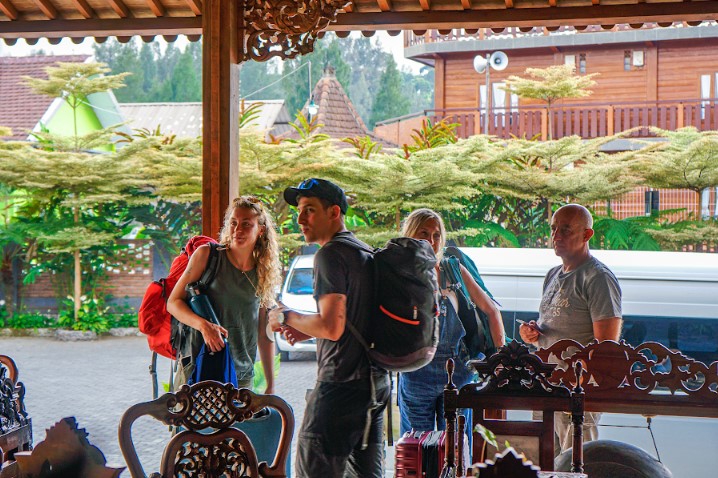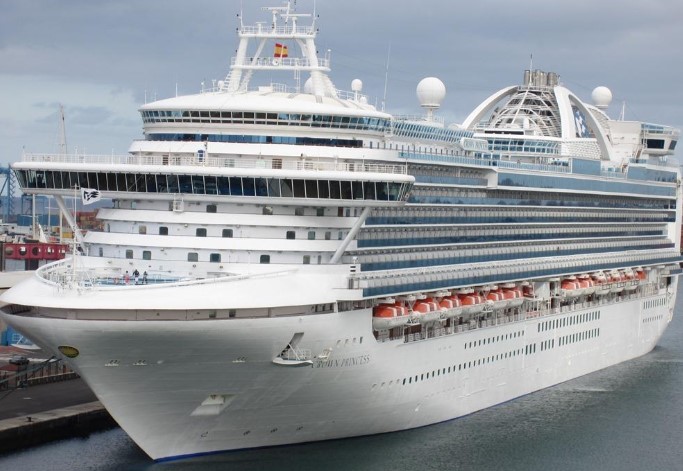Her London publisher Eland Books announced the death. She had recently suffered a series of strokes.
Decades before Cheryl Strayed hiked the Pacific Crest Trail with little preparation and turned it into her best-selling memoir “Wild,” Ms. Murphy inspired generations of readers by embarking on one trip after another with minimal equipment but an abundance of grit.
For Ms. Murphy, her serious traveling started in her 30s after many years of caring for her disabled mother. Later, as a single mother, she supported herself and her daughter on her travel writing. She published a total of 26 books.
“She provided a role model for independence, for freedom of spirit, for a whole generation of women when there was no one else like that in Ireland,” said fellow travel writer Manchán Magan in the 2016 documentary film “Who Is Dervla Murphy?”
Most active from the 1960s to the 1990s, Ms. Murphy was drawn to parts of the world nearly untouched by industrialization, urbanization and consumer culture, where people lived without access to modern plumbing or electricity, not to mention the satellite televisions and cellphones to come.
At home in Lismore, where she lived in a warren of old stone rooms without central heat, she never learned to drive a car or use a computer. She avoided small talk and regularly declined book tours and interviews. “Interviewing Dervla is like trying to open an oyster with a wet bus ticket,” Jock Murray, her first publisher, once said.
She gave up basic comforts when she traveled, often sleeping in a tent and using latrines, and acknowledged being “impervious” to discomfort. “It literally doesn’t matter to me whether I’m sleeping on the floor or on a mattress,” she said in the documentary. “I simply don’t notice the difference. And that really is a big plus when you’re traveling.”
She also insisted that it was not accurate to call her brave. “You’re only courageous if you do something you’re afraid of doing. I’m fearless when it comes to the physical, and that’s a totally different thing,” she said.
Her debut book, “Full Tilt” (1965), was billed as a journey “from Ireland to India” but was more accurately the story of a trip from Dunkirk, France, to Delhi. She conceived of the journey after receiving a bicycle and an atlas for her 10th birthday but kept her plan to herself, she wrote, “avoiding the tolerant amusement it would have provoked among my elders. I did not want to be soothingly assured that this was a passing whim because I was quite confident that one day I would cycle to India.”
She began the self-funded journey some two decades later, on Jan. 14, 1963, on “Roz,” a 37-pound man’s bike stripped of its three-speed derailleur and loaded with basic supplies, including blank notebooks and a compass. When she reached Delhi after six months, she had written thousands of words and pedaled for some 3,000 miles. Her total expenses amounted to £64.
Her journey began in the middle of a blizzard — which would go down in British history as the Big Freeze of 1963 — as she cycled despite frostbite along icy roads. Gales on the roads in Slovenia were strong enough to knock her off her bike and, when the snow began to melt, the raging Morava River separated her from Roz.
She faced down other dangers: wolves that nipped at her in Bulgaria, a Serbian man who entered her bedroom at night uninvited, and three men carrying spades along a road near Tabriz, Iran, who tried to steal Roz. In each case, she used the .25 pistol she brought for the trip to protect herself, killing a wolf with a bullet through the skull and firing warning shots to scare away the men.
Her adventure took her through small villages, and she dedicated “Full Tilt” to her “hosts” in Afghanistan and Pakistan, who often greeted her with warmth and food despite their befuddlement over a woman undertaking such a trek. She did not know their languages but took time to learn about their customs, religions and governments. She also sold her pistol in Afghanistan, “becoming an arms dealer,” she joked in the documentary, and after that carried a knife instead of a gun, which she feared would escalate violence.
Her following books, set in Tibet, Nepal, India, Ethiopia, Madagascar and Peru, blended food reviewing, political and religious reporting, and poetic musings of the Romantic-sublime variety, for example when the thrust of a mountain peak or stillness of a glacial lake overcame her. But the writing never veered far from her main subject: everyday encounters with the landscape and its inhabitants, from rowdy children to pompous local officials to semi-domesticated animals.
In “Eight Feet in the Andes” (1983), she travels far off the grid with her 9-year-old daughter, Rachel, and the mule who carried her, Juana (hence the “eight” feet). A good part of their quest involves locating alfalfa or oats for Juana to consume each day. In “Cameroon With Egbert” (1990), the most memorable in a near-Biblical litany of calamities — including clouds of biting flies, rainstorms and hailstorms, malaria, mountain paths that abruptly end in precipices, food shortages and lack of shelter — occurs when their trusted packhorse Egbert is stolen.
Over time, Ms. Murphy’s writing grew more politically explicit. She traveled to Northern Ireland amid the decades of sectarian violence known as “The Troubles” to better understand the militant Irish Republican Army. Subsequent books focused on the Rwandan genocide, turmoil in the Balkans, the legacy of the Vietnam War in Laos and the cycle of violence in the Gaza Strip.
Some readers criticized her later books as polemics, preferring the colorful travelogue entries to her anti-capitalist and sometimes anti-American diatribes. But it was difficult to separate her deeply held environmentalist convictions and opposition to globalization from her joyous discovery of some of the world’s most remote locations.
As she wrote in “Eight Feet in the Andes”: “There is much more to such experiences than visual beauty; there is also another sort of beauty, necessary to mankind yet hard to put in words. It is the beauty of freedom: freedom from an ugly, artificial, dehumanizing, discontented world in which man has lost his bearings.”
Ms. Murphy began her lengthy journeys after the death of her parents, Irish Catholics from Dublin. The day they married, the couple moved to Lismore so her father could take a job as the county librarian. Dervla Murphy — their only child, who was officially named Dervilla Maria Murphy to appease a priest who deemed her first name pagan — was born on Nov. 28, 1931.
Her mother suffered from rheumatoid arthritis. “By my first birthday she could no longer walk without the aid of a stick and by my second she could no longer walk at all,” Ms. Murphy wrote in her 1979 memoir, “Wheels Within Wheels.” After attending secondary school at the Ursuline Convent in Waterford, she dropped out at age 14 to care for her mother. She did so for the next decade, until her father died of influenza complications in 1961 and her mother, of kidney failure, in 1962.
While her mother’s immobility helped to inspire her travel, so did some maternal advice. “She was the first person who suggested I travel on my bike,” Ms. Murphy noted in the documentary. “She thought it would be a substitute for the education I had missed.”
In the mid-1960s, Ms. Murphy was romantically involved with Terence de Vere White, then literary editor of the Irish Times, who was married with children. He was Rachel’s biological father but by mutual agreement was not involved in her upbringing, and for years they kept his paternity a secret.
Ms. Murphy is survived by her daughter and three granddaughters.
As she grew older, Ms. Murphy was increasingly mistaken for a man while traveling. Her voice was deep, her hair short, and she was brawny enough that hammering down her first on a table, or taking one swing at someone, was enough to scatter potential assailants.
By the time she was 55 and traveled to West Africa with Rachel, then 18, for “Cameroon With Egbert,” locals were convinced of her manhood. Several assumed she and Rachel were husband and wife.
She hypothesized that this misgendering occurred not only because of her physique but also because the idea of women traveling by foot alone through the countryside was unthinkable. She tried to correct the misperception with limited success, until midway into the Cameroon journey she tried another approach: She took to unbuttoning her shirt in public at the first sign of misunderstanding. It was, like her literary voice, frank and persuasive.





More Stories
The Ultimate Guide to Mount Bromo and Ijen Tour: A Journey into Nature’s Wonders
The Complete Guide to Pantheon Tickets
Journey Through Italy